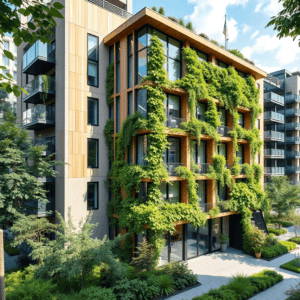The engineering design process is a crucial framework that can significantly enhance the effectiveness of green building projects. As we face pressing environmental challenges, it’s imperative that design engineers adopt methods that not only meet structural requirements but also prioritize sustainability.
By integrating eco-friendly practices into the engineering design process, we can create buildings that minimize energy consumption and reduce waste. This includes using renewable materials, optimizing energy efficiency through innovative designs, and implementing sustainable technologies such as solar panels and rainwater harvesting systems.
Design engineers play a pivotal role in this transformation. They are tasked with envisioning structures that harmonize with their environment while ensuring functionality and safety. By embracing an engineering process method focused on sustainability, they can lead the charge toward greener architecture.

Designing a green building requires an iterative approach that integrates sustainability, efficiency, and environmental responsibility from the start. Below is a structured engineering design process for green building design:
1. Define the Problem & Objectives
Identify the project’s purpose (e.g., residential, commercial, industrial).
Set sustainability goals (e.g., net-zero energy, LEED certification, passive cooling).
Consider location-specific environmental factors (climate, available resources).
Define budget constraints and stakeholder requirements.
2. Research & Feasibility Study
Analyze site conditions: solar exposure, wind patterns, water availability.
Study local building codes, environmental regulations, and green certifications (e.g., LEED, BREEAM).
Evaluate available materials, renewable energy sources, and sustainable construction methods.
Conduct life-cycle assessments to determine the environmental impact of materials and systems.
3. Concept Development & Preliminary Design
Develop conceptual layouts incorporating:
Passive design strategies (orientation, insulation, thermal mass).
Renewable energy integration (solar panels, wind turbines).
Efficient water management (rainwater harvesting, greywater recycling).
Smart building technologies (automated lighting, energy monitoring).
Sketch initial designs considering aesthetics, functionality, and sustainability.
4. Detailed Design & Engineering Analysis Process
Perform structural analysis ensuring material efficiency and durability.
Conduct energy modeling and simulations (HVAC efficiency, daylighting, thermal comfort).
Optimize water management systems (low-flow fixtures, efficient irrigation).
Design smart electrical and mechanical systems for optimal energy performance.
Evaluate material choices for sustainability, recyclability, and embodied carbon footprint.
5. Prototyping, Testing & Simulation
Run computational fluid dynamics (CFD) for ventilation and natural cooling efficiency.
Perform thermal simulations for energy performance.
Use Building Information Modeling (BIM) to refine structural and environmental interactions.
Test small-scale prototypes or 3D models for innovative green technologies.
6. Construction & Implementation
Select eco-friendly and energy-efficient materials.
Apply sustainable construction techniques (modular construction, 3D printing, low-waste strategies).
Implement renewable energy systems and water conservation measures.
Ensure proper insulation, sealing, and energy-efficient glazing for thermal performance.
Integrate smart building systems for energy monitoring and automation.
7. Monitoring, Evaluation & Optimization
Use sensors and IoT for real-time energy and water usage tracking.
Conduct post-occupancy evaluations for comfort, air quality, and efficiency.
Optimize building performance through adaptive controls and automation.
Apply feedback loops for future improvements and sustainability certifications.
Conclusion
Incorporating these principles doesn’t just benefit the planet; it also enhances the marketability of projects in a world increasingly concerned with environmental impact. The future of construction lies in our ability to innovate within this framework—making green building not just a trend but a standard practice in engineering design.
A successful green building design process blends engineering precision, environmental responsibility, and smart technology. It requires iterative refinement, careful material selection, and integration of passive and active sustainability strategies.